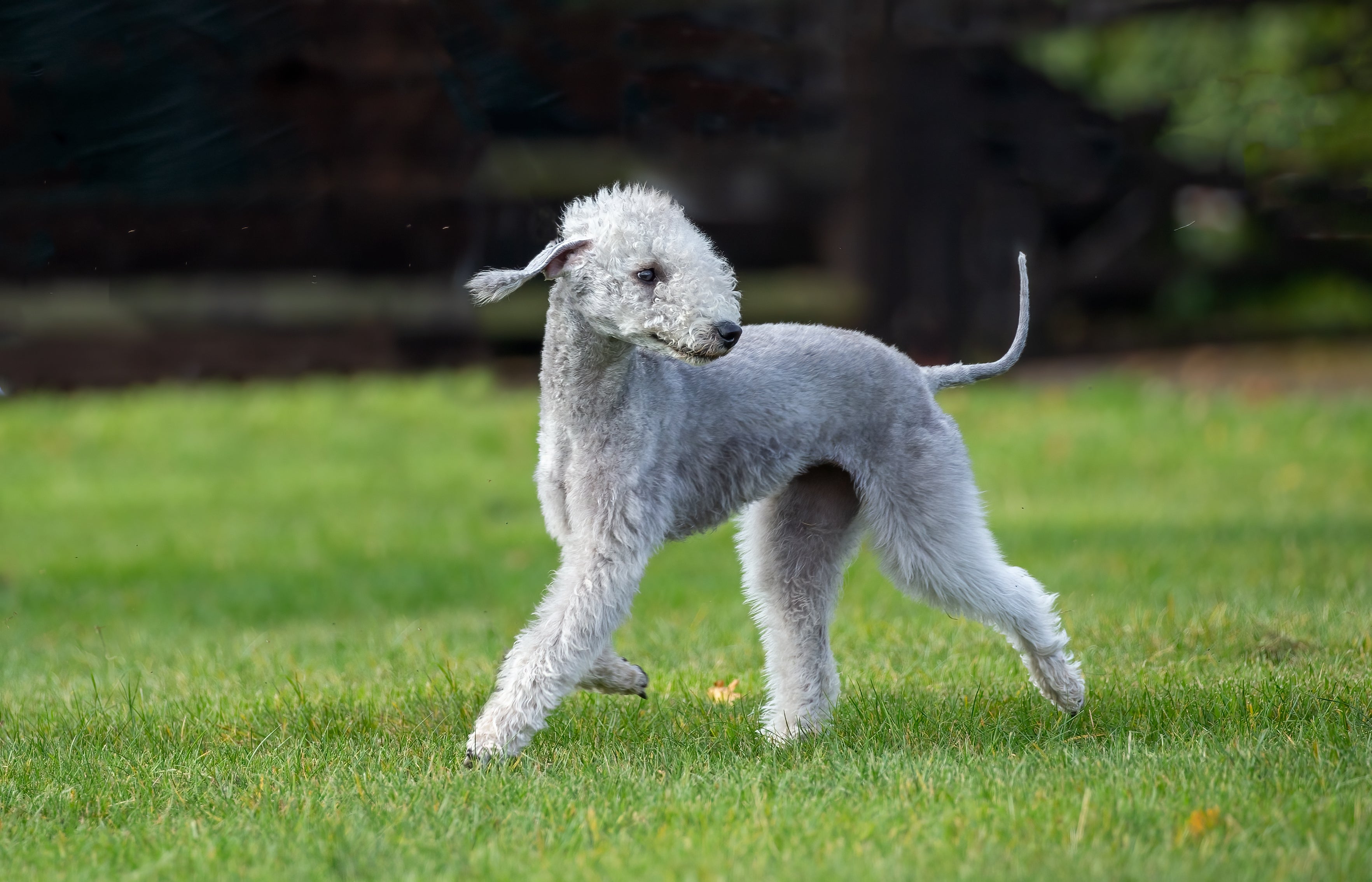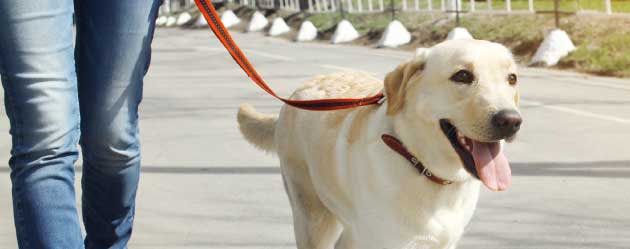Bedlington Terrier
The Bedlington Terrier is a lithe and athletic dog with a distinctive silhouette and face that looks like a lamb. Their arched back and powerful build allow for incredible speed and agility. Their movement is light and springy, and their unique coat is a blend of hard and soft hair. They have soft and docile temperaments and are demonstrative in their affection for their owners.
Breed characteristics carousel
Learn More
Need to Know
- Suitable for owners with some experience
- Basic training required
- Potential health issues
- Enjoys active walks
- Small dog
- Minimal drool
- Requires frequent grooming
- Chatty and vocal dog
- Barks and alerts to visitors/anything unusual
- Could have issues with unknown dogs but gets along with known dogs
- May need additional training to live with other pets
- May need additional supervision to live with children
- Needs a small yard
- Can live in the suburbs
- Can be left alone occasionally with training
- AKC Registered Breed

Personality
Bedlington Terriers are affectionate and fun-loving companions who form strong bonds with their families. While their terrier instincts can sometimes lead to playful mischief, they are generally gentle and loving and aren’t afraid to show it. They can be scrappy and stand up for themselves when needed.
The Bedlington Terrier's origins can be traced back to the 18th-century Rothbury region in Northumberland, England. While their exact origins are unclear, a strain of game terriers known as Rothbury Terriers emerged in the late 18th century. In 1825, Joseph Ainsley bred two Rothbury Terriers, creating the Bedlington Terrier. Later, in 1870, the Bedlington Terrier's unique, sheep-like appearance and temperament gradually evolved. They first showed up in America in the late 1800s.
A sense of humor, patience, and experience with terriers are essential for owning a Bedlington Terrier. Despite their fluffy appearance and gentle nature, they are true terriers at heart and can be feisty on occasion. Their sensitive and spirited nature requires a calm and affectionate owner to balance their sometimes spicy personality.
In true terrier fashion, Bedlington Terriers crave mental and physical stimulation. They need daily exercise, taking as much as you’ll give them. Think agility training, fetch, and puzzle games – the more creative, the better! Keep their minds engaged, and you'll have a happy, well-behaved Bedlington Terrier on your hands.
Bedlington Terriers are relatively small dogs and don't require a lot of space. However, they need regular access to safe outdoor areas for exercise and playtime.
The Bedlington Terrier’s coat requires regular upkeep to maintain their unique and beautiful appearance. Brush their coat frequently and comb through it on occasion. Due to their one-of-a-kind haircut, they'll need a professional trim every couple of months.
Bedlington Terriers are surprisingly easy to train, especially for activities like agility that keep their minds and bodies sharp. They're smart and energetic, but they can also be a bit stubborn. A strong recall is essential, especially if you live near squirrels or rabbits. While they can learn to live with cats, it might take a lot of patience and training.
Bedlington Terriers can be great family dogs, but their high energy levels and sensitivity to rough play make them better suited for homes with older children. While they are affectionate and playful, they can become over-excited in rambunctious environments.
The cost of a Bedlington Terrier from a breeder is significantly more than the cost of adopting one from a local shelter or rescue. The adoption fee usually covers additional items such as spaying or neutering, vaccines, and microchipping.

Learn more about feeding and caring for your Bedlington Terrier on Purina.
Did You Know?
- Originally, Bedlington Terriers were bred with either Whippets or Dandie Dinmont Terriers, resulting in two distinct types. Today's Bedlington Terriers are a blend of both.
- Renowned for their intelligence and agility, Bedlington Terriers are often considered one of the smartest and quickest terrier breeds.


